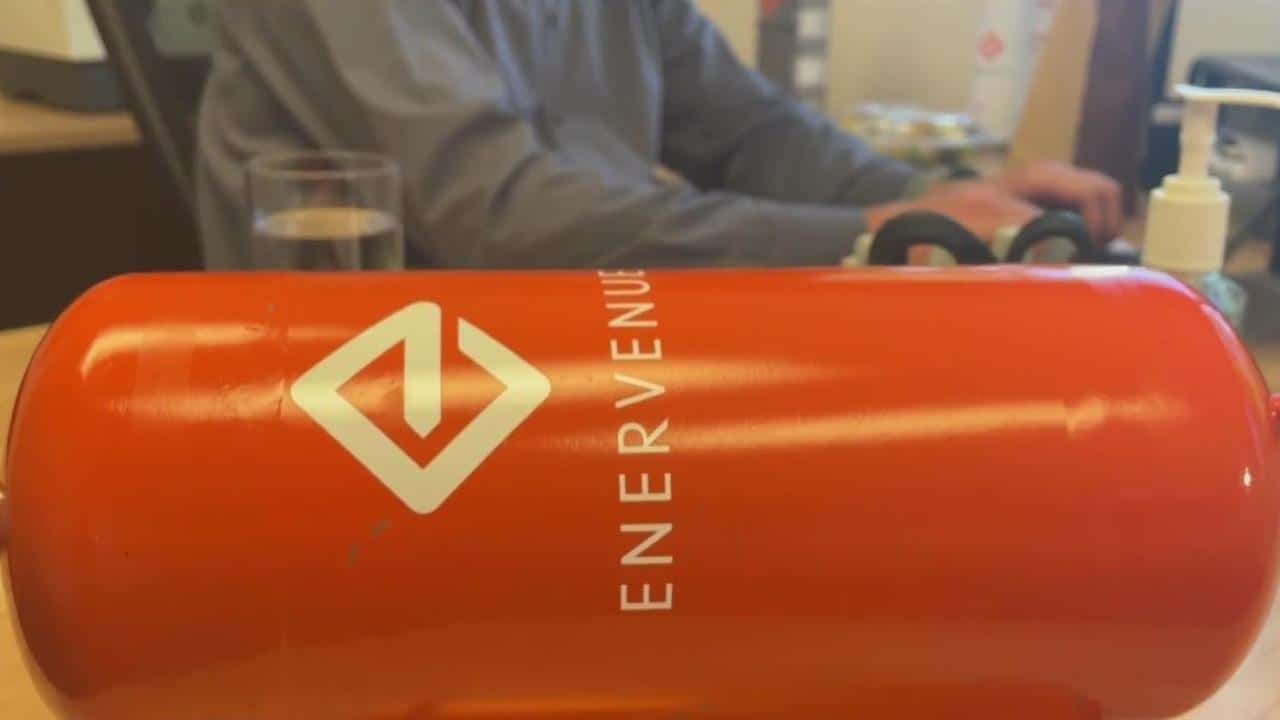Jorg Heinemann is on his way to work. It’s a 2 ½ hour trek by bike to Fremont.
“This is one of my favorite trails,” he told CBS News Bay Area, as he zipped along a scenic stretch of the San Mateo coast.
Heinemann loves to bike and go long distances. Some might say the avid cyclist is his own source of renewable energy.
“Yeah, there you go. Exactly. It’s a lot of fun. It’s been a passion for a long, long time,” laughed Heinemann.
His other big passion involves a new way to store renewable energy.
He oversees a game-changing technology that is challenging conventional energy storage. The technology involves a stationary battery that is made at a Bay Area factory.
“It’s basically the do-everything battery,” remarked Heinemann.
Heinemann is CEO of EnerVenue, which is headquartered in Fremont.
The Bay Area startup aims to revolutionize the electrical energy sector by accelerating how wind and solar energy are stored. The company’s battery is the secret ingredient.
“Our battery, unlike lithium ion, unlike everything else, effectively lasts forever,” Heinemann stated.
These batteries use nickel hydrogen. The technology’s been around for nearly 50 years, primarily in the space industry. It has stored and provided solar power to everything from satellites, the Hubble telescope, even the International Space Station.
But using it on a large-scale project back on Earth was daunting and quite costly. A critical component is made of platinum.
“The challenge was that it was also crazy expensive,” Heinemann said.
A few years ago, the founder of EnerVenue Yi Cui, who leads a research lab at Stanford University, took a fresh look at the technology. He discovered a clever way to make these batteries dramatically cheaper.
And while the nickel must be mined, it’s abundantly found on earth.
“That took this crazy good performing energy storage technology and made it affordable,” said Heinemann.
Fire and explosion risk are well documented risks when it comes to lithium-ion batteries.
As for the EnerVenue technology, the battery or vessel were tested for fire safety hazards associated with propagating thermal runaway within battery systems. This standard test is called the UL 9540A.
The main findings: no flaming occurred, no module-to-module propagation, no explosion hazards observed, and the flammable gas release was below detectable limits.
Heinemann told CBS News Bay Area that as for the hydrogen the batteries contain such tiny amounts, that even when thrown on a fire there has been no demonstrated issue.
In fact, the technology inside the battery put out the fire.
“That pressure actually forces the hydrogen to recombine with the water inside the battery. The worst thing that can happen is a steam release,” explained the CEO.
As in space, the batteries can operate in harsh conditions, with little or no maintenance. The company says there’s no need for extra air conditioning or a fire suppression system.
According to a nationally recognized lab, the batteries meet critical safety standards. They can charge and discharge at a fast or slow rate.
As to what is meant by “lasting forever,” Heinemann explained the actual limitations.
“It has a life cycle of 30,000 cycles that would mean charging the battery and discharging it three times a day for 30 years in practical terms that’s a forever battery,” he said.
As noted, the batteries are stationary, and can be mounted in racks, stacked or stored in containers.
They could be used on the grid, in a business, or one day even in your home — as seen on a prototype constructed outside the factory.
“Our battery can be placed underneath the floor, in the crawl space of a home or in an attic anyplace that is ventilated we can go,” Heinemann said.
Utility companies across the United States are now testing these batteries. EnerVenue is also building a second, bigger factory in Kentucky to handle the expected demand.
While the battery might be “forever”, the components are not. The company told CBS News Bay Area that the components are non-toxic and are almost fully recyclable.
As for Heinemann, he said if he’s on his bike, it’s where he gets his best ideas. For years, he was looking for a battery that would compete with lithium. With this battery, he now believes he is on the path to success.

